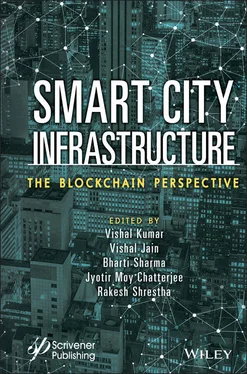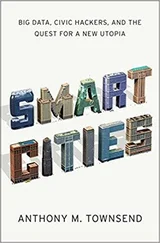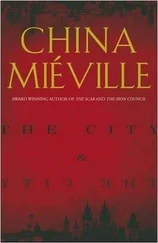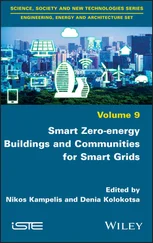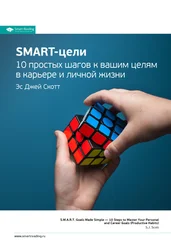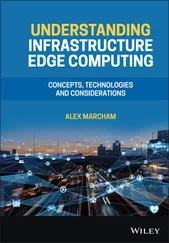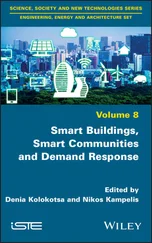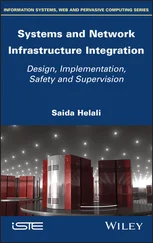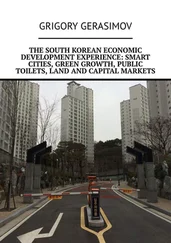Smart City Infrastructure
Здесь есть возможность читать онлайн «Smart City Infrastructure» — ознакомительный отрывок электронной книги совершенно бесплатно, а после прочтения отрывка купить полную версию. В некоторых случаях можно слушать аудио, скачать через торрент в формате fb2 и присутствует краткое содержание. Жанр: unrecognised, на английском языке. Описание произведения, (предисловие) а так же отзывы посетителей доступны на портале библиотеки ЛибКат.
- Название:Smart City Infrastructure
- Автор:
- Жанр:
- Год:неизвестен
- ISBN:нет данных
- Рейтинг книги:4 / 5. Голосов: 1
-
Избранное:Добавить в избранное
- Отзывы:
-
Ваша оценка:
- 80
- 1
- 2
- 3
- 4
- 5
Smart City Infrastructure: краткое содержание, описание и аннотация
Предлагаем к чтению аннотацию, описание, краткое содержание или предисловие (зависит от того, что написал сам автор книги «Smart City Infrastructure»). Если вы не нашли необходимую информацию о книге — напишите в комментариях, мы постараемся отыскать её.
The wide range of topics presented in this book have been chosen to provide the reader with a better understanding of smart cities integrated with AI and blockchain and related security issues.
Audience
Smart City Infrastructure — читать онлайн ознакомительный отрывок
Ниже представлен текст книги, разбитый по страницам. Система сохранения места последней прочитанной страницы, позволяет с удобством читать онлайн бесплатно книгу «Smart City Infrastructure», без необходимости каждый раз заново искать на чём Вы остановились. Поставьте закладку, и сможете в любой момент перейти на страницу, на которой закончили чтение.
Интервал:
Закладка:
1.2 Blockchain Preliminaries
1.2.1 Functioning of Blockchain
Blockchain is a collection of heterogeneous distributed networks. It considers as a unique technology of this century among other famous innovations because of its elements like crypto techniques, consensus algorithms, and public ledger; working procedure of blockchain consists of various styles, among those we mentioned some of them: customer, client, or node who desire to make a transaction will record and broadcasts the data to the appropriate setup, next to the receiver or the node who interest to receive the data validate the genuineness of data received, and after validation stores data in a block inside the network, every node or the customer in the network authorize the transaction through implementing the PoW or else PoS algorithms which need the validation, and finally, the network that utilized the consensus models will be stored into the block and connected to the blockchain list. Then, every single node in the setup acknowledges the relevant block and then enlarges the chain position on block.
1.2.2 Design of Blockchain
The expansion of the blockchain system will make tremendous changes and impact approximately every industrial, educational, and scientific field in the coming days. In particular, financial transactions are progressing in inventive ways, making it exceptionally important for one and all to understand the blockchain mechanism’s architecture and working style. Blockchain blocks are continuously enhance, secure with crypto techniques [6–10]. Here, each block holds a crypto-based hash value of the preceding block, a timestamp, along with transaction info.
In the design of blockchain, information or records are professional along with a related listing of transaction blocks well-maintained in a balanced catalog in the pattern of smooth files. Each block, linked with the preceding block, the initial block entitled the source block. The blockchain database visualized as a good stack, blocks mounded on the peak of one another, finished as the initial block as the stack’s base. Every block of blockchain authorized with cryptography has a function by implementing the SHA-256 algorithm and stored in the block’s header. One parent block can hold multiple children block; every child block encloses some parent hash value. The characteristics of child blocks purely depend on the parent block’s identity and properties. This procedure prolongs until getting each grandchild blocks [6–12]. The cascade consequences confirm that, just once a block has several productions, it cannot interfere with all the successive blocks’ forceful recalculations. For more understanding, we mentioned some ingredients with more explanations [4–16].
1 i. Data: In blockchain, data stored in the database mostly depend on the respective services and applications, like recording the transmission particulars and banking with IoT. They were storing if data performed peer-to-peer, cloud formation, etc.
2 ii. Hash: In the hash function, we can give any length message as input, but it produces unique predetermined length output. If any assailant made changes in the message, then the output comes out entirely differently. For example, if anyone client makes an effort to modify the info kept in a block, then afterward, the block shows an entirely different hash value. To avoid this kind of situation, there must be an assurance that minors of the network must have the knowledge prepared by revising the ledger replicate of total abusers. This will surely boost the reliability of info kept in the blockchain.
3 iii. Timestamp: For every transaction, it is compulsory to note the time once the block is shaped. Timestamping is a technique employed to trail or to follow the formation or else adapt the period of a certificate in a safe mode. This kind of procedure turns into a vital tool in the corporate business world. Moreover, blockchain authorizes only the concerned parties to recognize the source and then accessibility of a certificate/file on a specific day and occasion.
4 iv. Moreover, the data contains nonce and digital signatures; each customer holds both public/private keys. Digital signature restrains both keys for signing (private key reserved, sign-on, transaction data) and verification (public key for validation and decrypt the data) phase. Nonce value with 4-byte strength utilized for message authentication.
1.2.3 Blockchain Elements
Blockchain collects different techniques like mathematical methods, algorithms, cryptography protocols, and economic standards. It merges every part of end-to-end networking plus distributed consensus algorithm to resolve the management issues from a long-established scattered database. As we mentioned earlier, blockchain contains numerous elements; out of them here, we discussed some important points below [4–10, 12–18].
1 i. Decentralization: Decentralization can distribute functions and controls from a centralized authority to every entity that is associated. In the blockchain, each blockchain client provides a replica of the transaction record; moreover, a new block is implanted for the justification of transaction by the clients who are part of the blockchain structure.
2 ii. Consensus model: The inclusion of consensus models supports maintaining the purity of data recorded on the blockchain. In general, a consensus protocol contains three possessions; depend on applicability and good organization. Those are fault tolerance—a consensus procedure offers resilience while reviving to a failure not contributing to consensus. Safety—It must be safe and sound, reliable, and every node must produce a similar output legally binding under the protocol regulations; Liveness—Protocol must assure every non-faulty node to yield a value.
3 iii. Transparent: For explicit transactions, a blockchain scheme after a specific time (depend on application) verifies itself to make self-audit the eco-system of a digital price that resolves communications that occur in specifically mentioned time breaks. In a blockchain, the collected works of these transactions are acknowledged as block. As a result, it shows the intelligibility and incapability of frauds are engendered.
4 iv. Open source: As a decentralized structure blockchain kind, closed-source appliance trust that the appliance is purely working as decentralized then data not be contacted from a central basis. Blockchain-based locked appliances act as a hurdle to approval by customers. However, revulsion to a locked network was not traceable when the appliance plan to collect, hold and transmit customer endowments. Opensourcing, a distributed appliance, alters the formation of business performances who utilized to support the Internet as the general denominator.
5 v. Identity and access: In any network, identity and access are the two central pillars to succeed. Like in a blockchain, identity and access are associated with three major public, private, and consortium standards. A public or permission less blockchain proposed to eliminate the middleman at the same time maintains the security high. Private or permission blockchain restricts the customers from holding authority and justification of blockchain restrictions while creating smart contracts. The proposal designed for private blockchain endows with the effectiveness and seclusion of transactions. Last, consortium blockchain, moderately private, also allows a few determined discriminating nodes to have complete control.
6 vi. Autonomy: The central part of a blockchain is to exchange the trust from one authority to another authority exclusive of any indication. Every entity of the blockchain arrangement securely updates and transmits information. The transaction trace plus smart contract particulars are kept as blocks in the blockchain.
Читать дальшеИнтервал:
Закладка:
Похожие книги на «Smart City Infrastructure»
Представляем Вашему вниманию похожие книги на «Smart City Infrastructure» списком для выбора. Мы отобрали схожую по названию и смыслу литературу в надежде предоставить читателям больше вариантов отыскать новые, интересные, ещё непрочитанные произведения.
Обсуждение, отзывы о книге «Smart City Infrastructure» и просто собственные мнения читателей. Оставьте ваши комментарии, напишите, что Вы думаете о произведении, его смысле или главных героях. Укажите что конкретно понравилось, а что нет, и почему Вы так считаете.
